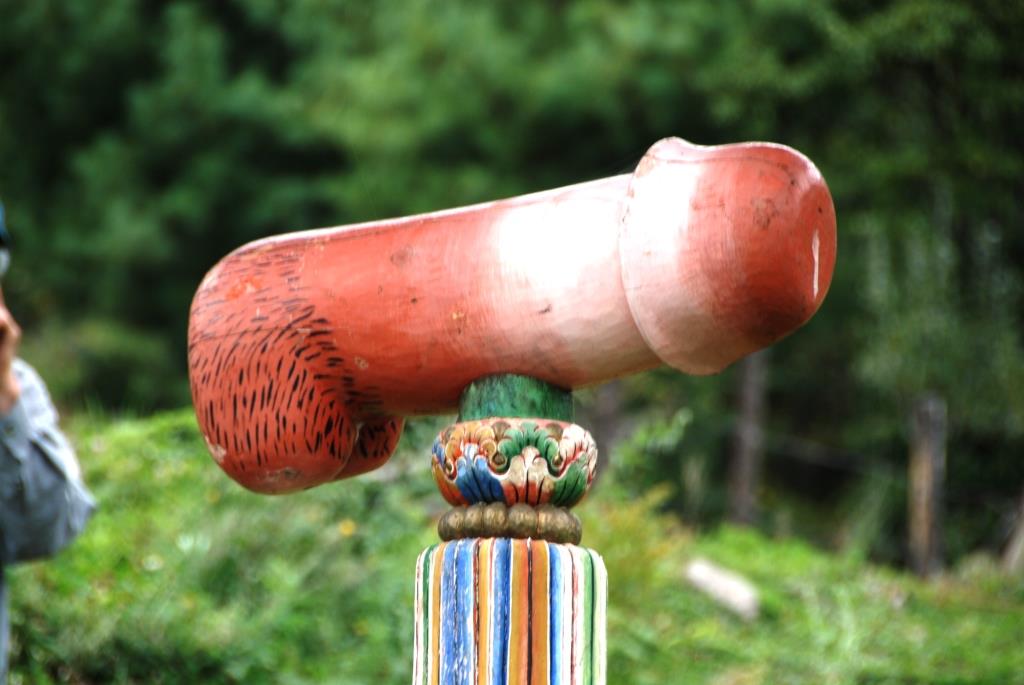Of all the eyebrow raising objects in the wide world, the phallus, surprisingly, for centuries, has had the most loyal following in the tiny Himalayan kingdom of Bhutan.
It is painted on the walls of houses or hanging from them, it is seen in vehicles and on unexpected road bends. In fact, the phallus – whether carved or just an image – has become such an essential part of Bhutanese tradition and custom that books have been written about it.
And, why not?
The Bhutanese believe that the phallus is a symbol of vigor and therefore aids in fertility. But, they also believe that the phallus chases away malicious gossip and offers protection from evil.
Today, the age-old tradition of phallic worship in Bhutan is being revisited by the younger generation so as to preserve its rich narratives, as artistic inspiration and as a scared tool for religious belief. The painting of an erect penis adorning walls and houses are no longer discomforting to them.
As one travels around Bhutan, one sees phalluses of all kinds – from one village to another. Also, the stories one hears along the way, behind its symbolism, is equally varying and intriguing. But, as that may be, the younger generation are now looking at it as a new art form – giving the phallus their own spin to spirituality, culture and rituals.
Perhaps the multiplicity of reactions it evokes, from mirth to profundity, represents the rigidity of one’s perspectives but, that notwithstanding, movies are being made and books written about it.
Having said that, no phallus is complete without the mention of one great spiritual teacher – Drukpa Kunley or the Divine Madman. He is solely responsible, even today, for the popularity of phallic worship in Bhutan that took roots in the country in the 15th century.
Drukpa Kunley was the guru who simplified Tantric Buddhism which is still practiced in Bhutan today. And he had rather unconventional methods of teaching the dharma – they were often fraught with sexual overtones.
To give you an example, he is supposed to have said: “The best wine lies at the bottom of the pail, and happiness lies below the navel.”
The Divine Madman’s silver-handled bamboo phallus, believed to have been brought from Tibet, can still be found in the Chimi Lhakhang in Punakha. The monastery was built in 1499 to honor the eccentric Buddhist teacher. The silver-handled bamboo phallus is believed to possess divine power to help sterile couples have children.
Some do argue that phallic worship existed much before the 15th century. But, that, we will most probably never know. Much of Bhutan’s history hasn’t been documented still. And there are pockets in the country that continue to practice animist rituals which predate the arrival of Buddhism in Bhutan.
In western Bhutan, during the festival called Lhabon – or calling the gods, one community uses a ladder that has its edges carved in the shape of a phallus. They believe the deities that bless them with prosperity and good health descend on the rope tied to the ladder.
In the eastern district of Lhuntse, an ancient festival called Wayo is meant to shed sexual inhibitions. During the festival, symbols and images of male and female genitals are used and verses filled with sexual innuendos are recited.
For now, whichever side the argument may tilt, one thing is for sure. The phallus is here to stay.


